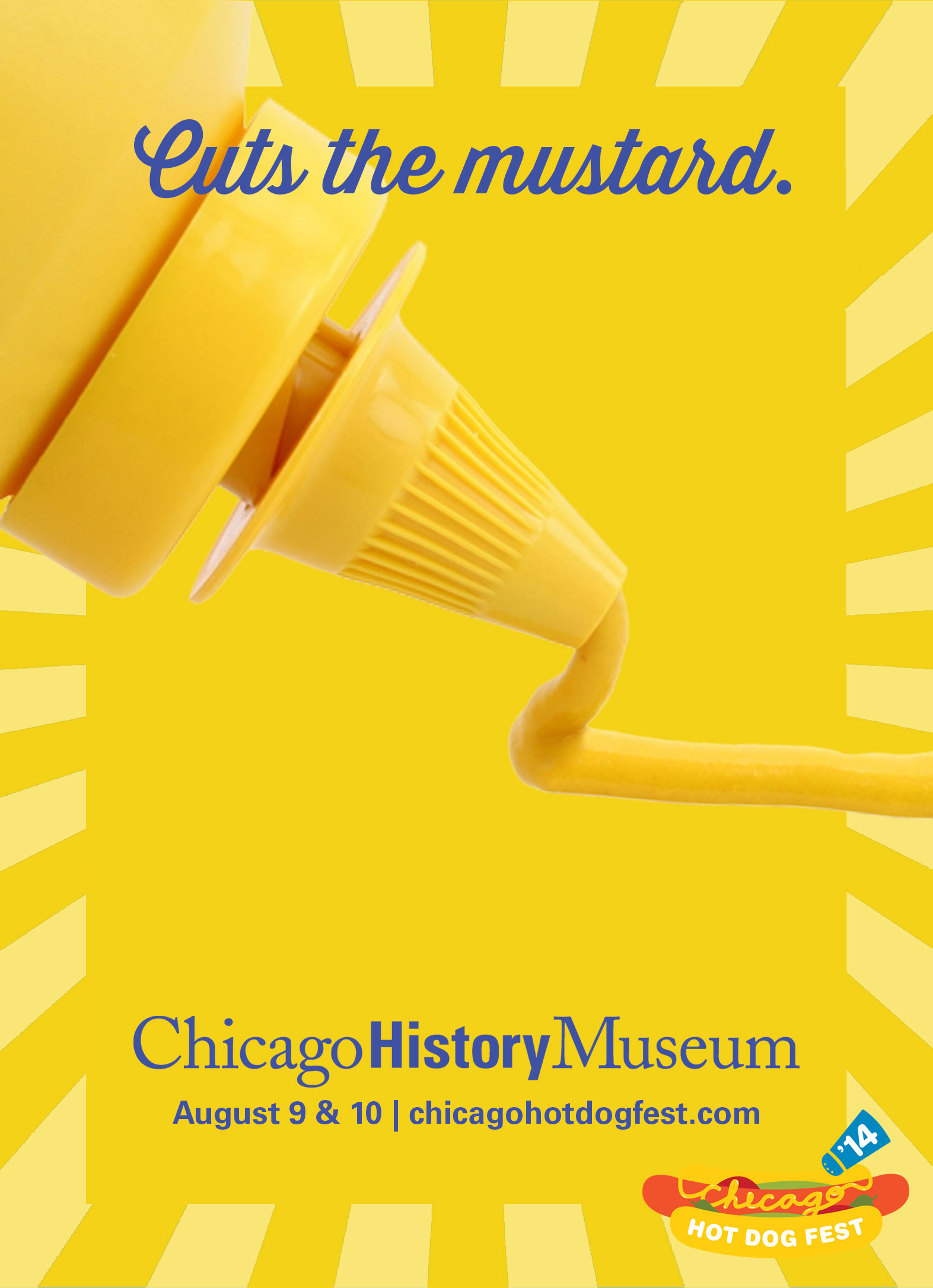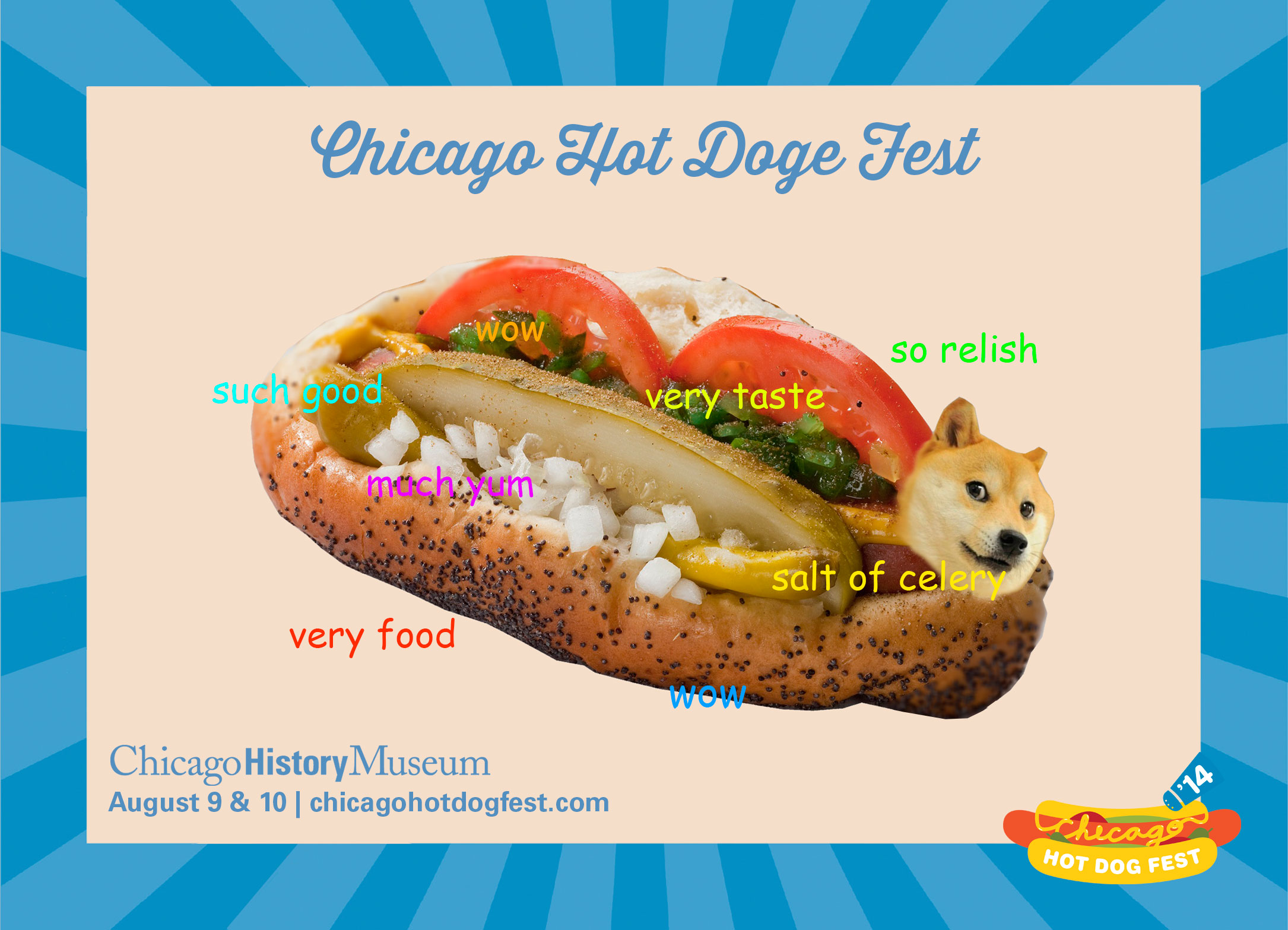Objective
Create eye-catching flyers that engage the Chicago History Museum's social media audience in order to promote this event.
Process
Used
Photoshop CS6, pen and paper for preliminary sketches.
Inspiration
I created a branded poster campaign for social media that illustrated the seven different toppings on a classic Chicago-style hot dog, using the print flyer (right) created to advertise the event as reference for typography, stylistic elements, and tone of voice.
Copy
Before I can begin visual design, I must have content to work with. I wanted to create brief clever puns to include on the posters that could accomplish two things: 1) convey what hot dog topping was being featured, and 2) compel users to want to learn more about Hot Dog Fest. I first listed out the seven Chicago-style hot dog toppings, and then researched existing puns for each ingredient before crafting the final copy. I used the (right) print flyer's headline "relish the dog" as the starting point, and utilized it for the relish poster to keep this flyer and the social media posters connected.
In addition to the topping posters, I also experimented with creating my first meme -- I turned the shiba inu, Doge, into a Chicago-style "hot doge." While I don't normally condone the use of Comic Sans, occasionally it can work. Case in point:
Why does visual design matter in UX work?
If I can’t picture it, I can’t understand it.
- Albert Einstein
Visual design is integral to the creation of a product. A product’s appearance impacts its functionality -- a website or app that looks illogical, cluttered, and disorganized would be hard to understand and use. In UX every decision that is made, including those regarding appearance, are a result of careful planning, research, and user testing. The user interface must bring together the user's needs with the product's features. UX designers must understand how to translate actions into visual queues users can follow and interact with. How an interface looks will guide a user in how to use the product.
In addition to functionality and ease of use, UX is also about creating experiences that are enjoyable and that make people want to have them again and again, which can be accomplished through visual design and aesthetic.












